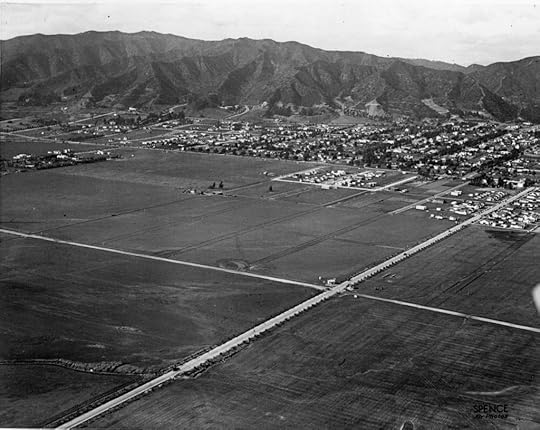Steve Hely's Blog
November 21, 2025
Vegas
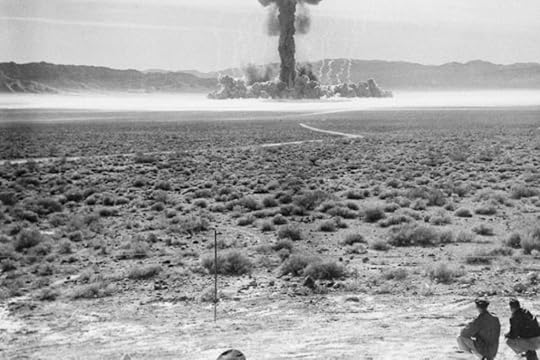
(source)
What is hidden elsewhere exists here in quotidian visibility. So when you fly out of Las Vegas to, say, Milwaukee, the absences imposed by repression are like holes in your vision. They become breathtakingly perceptible, and, as a consequence, there is no better place than Las Vegas for a traveler to feel at home. The town has a quick, feral glamour that is hard to localize—and it arises, I think, out of the suppression of social differences rather than their exacerbation. The whole city floats on a sleek frisson of anxiety and promise that those of us addicted to such distraction must otherwise induce by motion or medication.
A Dave Hickey quote from this Hedgehog Review piece about Las Vegas by Isaac Ariail Reed. Intellectuals writing about Las Vegas tend to crack a little bit. It’s unsayable. Michael Herr’s The Big Room is my favorite.
Previous coverage of Las Vegas
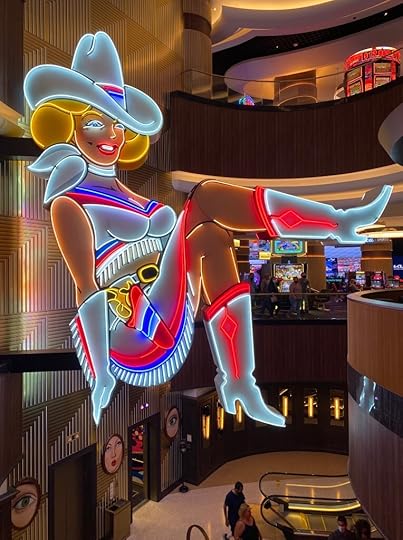
November 20, 2025
The Notebooks of F. Scott Fitzgerald
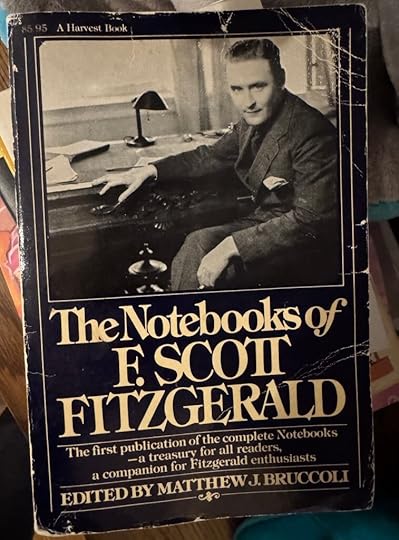
In the library at Princeton sit two 8 1/2 by 11 spring binder notebooks which F. Scott Fitzgerald filled with scraps he wanted to save from short stories he knew he wouldn’t republish, along with lines, paragraphs, “Nonsense and Stray Phrases,” “Conversation and Things Overheard,” “Feelings & Emotion (without girls),” “Descriptions of Girls,” “Moments (What people do)” and other material. Editor Matthew Bruccoli numbered them and supervised the publication.
602 Cordell Hull – Donald Duck eyes?
1021 T. S. P A Romance and a Reading List
Sun also Rises. A Romance and a Guide Book
1029 I can never remember the times when I wrote anything – This Side of Paradise time or Beautiful and Damned and Gatsby time for instance. Lived in story
1043 When Whitman said “Oh Pioneers” he said all.
1312 Idea that in the higher levels of human achievement writing Thalberg etc. difference is so slight etc.
1313 Awful disillusion of arriving at center of supposed authority and finding need of flattery so as to be reinforced in that authority
1362 I left my capacity for hoping on the little roads that led to Zelda’s sanitarium
1372 About finding I am not a rational type, finding it in Hollywood, I mean, in script writing. How every director must be, for instance.
1846 The people of Hollywood are not very nice outwardly – there is too much unwelcome familiarity, too much casual snootiness. (the agent who picked up paper in the office).
1853 Malibu: A bunch of dressing cabins for people who can’t swim (look up and see if it’s mine or DeMille’s)
2058 The purpose of a fiction story is to create passionate curiosity and then to gratify it unexpectedly, orgasmically. Isn’t that what we expect from all contacts?
2041 Actresses have to be show offs and not look like show off.
2043 There is a time in the life of all great conquerors when they would gladly settle in for a safe colonelcy – but they can’t; for them it’s Victory or elimination.
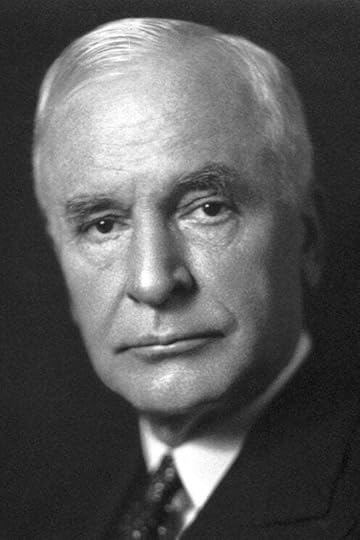
Cordell Hull

Previous coverage of F. Scott Fitzgerald’s notebooks, his lifestyle and diet, and Love of the Last Tycoon.
November 18, 2025
Fairfax and Melrose, 1922
November 16, 2025
KC Masterpiece
warning: there’s some rough language in this post.

Is the barbecue sauce my first association with Kansas City?
KC Masterpiece is a barbecue sauce that is marketed by the HV Food Products Company, a subsidiary of the Clorox Company
It was invented by Rich Davis, a child psychologist and former Dean of the University of North Dakota Medical School, who also experimented with “mustchup,” a mustard ketchup combo.
Kansas City became famous in song as a party town. The Beatles sing about it:
“Kansas City” was written by Jerry Leiber and Mike Stoller, two nineteen-year-old rhythm and blues fans from Los Angeles. Neither had been to Kansas City, but were inspired by Big Joe Turner records.
from Big Joe Turner’s Wikipedia page:
At that time Kansas City nightclubs were subject to frequent raids by the police; Turner said, “The Boss man would have his bondsmen down at the police station before we got there. We’d walk in, sign our names and walk right out. Then we would cabaret until morning.”
Why Kansas City?:
In the 1930s, Kansas City was very much the crossroads of the United States, resulting in a mix of cultures. Transcontinental trips by plane or train often necessitated a stop in the city. The era marked the zenith of power of political boss Tom Pendergast. Kansas City was a wide open town with prohibition era liquor laws and hours totally ignored, and was called the new Storyville. Most of the jazz musicians associated with the style were born in other places but got caught up in the friendly musical competitions among performers that could keep a single song being performed in variations for an entire night.
so says the Wikipedia entry “Kansas City Jazz.”
In the late 1930s and early 1940s, when Kansas City was a hotbed of jazz activity, Mr. McShann was in the thick of the action. Along with his fellow pianist and bandleader Count Basie, the singer Joe Turner and many others, he helped establish what came to be known as the Kansas City sound: a brand of jazz rooted in the blues, driven by riffs and marked by a powerful but relaxed rhythmic pulse.
“You’d hear some cat play,” he told The Associated Press in 2003, “and somebody would say, ‘This cat, he sounds like he’s from Kansas City.’ It was Kansas City style. They knew it on the East Coast. They knew it on the West Coast. They knew it up north, and they knew it down south.”
Jay McShann obituary.
from a pretty interesting 1948 article in the Journal of Criminal Law and Criminology, “The Myth of hte Wide-Open City,” by Virgil W. Peterson:
In 1933 Tom Pendergast openly boasted that while gambling and slot machine complaints might be frequent, Kansas City afforded its citizens greater protection from violence and crime than any other American city. But that was only the usual prating of a machine boss. The die had been cast,-wide-open
gambling, always a chief pillar of organized crime and political corruption, had resulted in powerful alliances between officialdom and the underworld. Kansas City had become the most wideopen town in the United States,-a haven for the toughest gangsters from every part of America. The officials who had
utilized the underworld in maintaining political dominance had created a monster they could no longer control. The underworld was completely out of hand. In May, 1933, the daughter of the city manager, Henry F. McElroy, was kidnaped. John Lazia, the gangster, took over the task of raising the ransom money. She was released. On the morning of June 17, 1933, a brazen attempt was made to liberate the notorious bank robber and escaped federal prisoner, Frank Nash, who had been captured and was being returned to the federal penitentiary. As officers emerged with Nash from the Kansas City Union Station, machine guns blasted forth. Five persons were killed, including two members of the Kansas City Police Department, a special agent of the FBI, a chief of police from Oklahoma and, ironically, Frank Nash himself. Two other officers were wounded. The massacre had been engineered by the outlaw, Vern C. Miller, who had been placed in touch with the killers, Pretty Boy Floyd and Adam Richetti, by the gambling czar John Lazia. In July, 1933, the kidnaping of the wealthy Charles F. Urschel in Oklahoma attracted nationwide attention. Ransom money paid in the case was traced to a prominent Kansas City criminal gang. In the same year a lieutenant of John Lazia attempted to kill Sheriff
Thomas B. Bash.
In the March, 1934, election, fraud was rampant and it was conducted in Hitler fashion. Four people were killed and eleven seriously injured in election violence. The attention of the entire United States was focused on Kansas City. The United States Senate announced its intention to conduct an official investigation. John Lazia was then recognized in Kansas City as one of its most influential and powerful political figures. A short time later, on July 10, 1934, John Lazia fell in a hail of gangland bullets. Tom Pendergast’s chief lieutenant and gambling overlord was dead. And, ironically, the gun which fired the fatal bullets had been used a year earlier in the Union Station massacre in which Lazia had figured. Kansas City still had to endure five years of the “rule of ruin” before Tom Pendergast was committed to the federal penitentiary May 29, 1939. Unfortunately, the story of the Pendergast machine is not the story of Kansas City alone. Disgracing the pages of American political history, comparable stories are recorded of many of our large municipalities.
Peterson argues that “wide open city” method – letting the gangsters get away with their vices in exchange for keeping murder outside of the cities – didn’t work. I don’t know if it was ever really intended to, seems like bullshit the likes of Pendergast invented so they could justify the profitable vices and criminal alliances.
While it may not have worked for keeping order, the wide open city did seem to lead to a raucous music scene. The greatest Kansas City jazzman has got to be Charlie Parker.
In 1940, he returned to Kansas City to perform with Jay McShann and to attend the funeral of his father, Charles Sr. The younger Parker then spent the summer in McShann’s band playing at Fairyland Park for all-white audiences; trumpet player Bernard Anderson introduced him to Dizzy Gillespie.
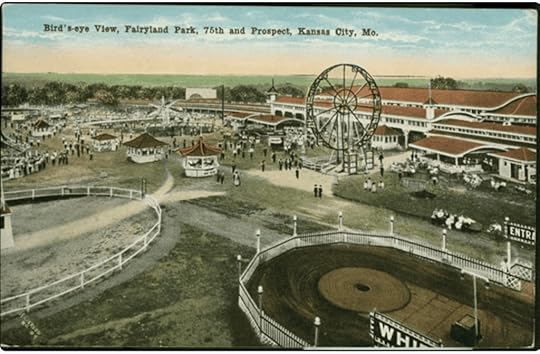
(source)
You won’t have a bad time if you go to Spotify or YouTube and put on Charlie Parker Radio as you read the rest of this post.
Music and violence still seem to intersect in Kansas City. Mac Dre was shot and killed there:
After Hicks and other Thizz Entertainment members had performed a show in Kansas City, Missouri on October 31, 2004, an unidentified gunman shot at the group’s van as it traveled on U.S. Route 71 in the early morning hours of November 1. The van’s driver crashed and called 911, but Hicks was pronounced dead at the scene from a bullet wound to the neck.[13] Local rapper Anthony “Fat Tone” Watkins was alleged to have been responsible for the murder, but no evidence ever surfaced, and Watkins himself was shot dead the following year.
Although maybe there’s one of those in every city if you go digging.
Before Pendergast, Kansas City was already wild. From David McCullough’s Truman, describing Kansas City around 1900:
It. was a wide-open town still, more than living up to its reputation. Sporting houses and saloons far outnumbered churches. “When a bachelor or stale old codger was in sore need of easing himself [with a woman], he looked for a sign in the window which said: Transient Rooms or Light Housekeeping,” remembered the writer Edward Dahlberg, whose mother was proprietor of the Star Lady Barbershop on 8th Street. To Dahlberg, in memory, nearly everything about the Kansas City of 1905, the city of his boyhood, was redolent of sex and temptation. To him it was a “wild, concupiscent city.” Another contemporary, Virgil Thomson, who was to become a foremost composer, wrote of whole blocks where there were nothing but saloons, this in happy contrast, he said, to dry, “moralistic” Kansas across the line. “And just as Memphis and St. Louis had their Blues, we had our Twelfth Street Rag proclaiming joyous low life.” But with such joyous low life Harry appears to have had little or no experience. Years afterward, joking with friends about his music lessons, he would reflect that had things gone differently he might have wound up playing the piano in a whorehouse, but there is no evidence he ever set foot in such a place, or that he “carried on” in Kansas City in any fashion.
Young Ernest Hemingway was a reporter for The Kansas City Star in 1917-1918, when he was roughly 17-18. Hemingway biographers and documentarians like to point out the influence of The Kansas City Star style sheet, which begins:

but it also has a bunch of stranger rules:
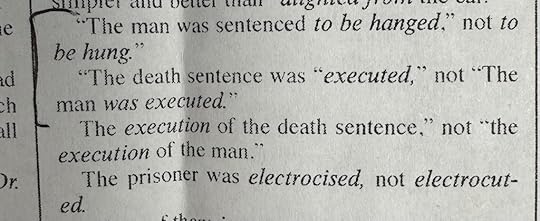
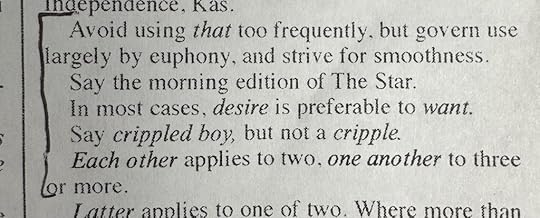


I’m glad I printed it out, it used to be online at the Kansas City Star’s website but the link appears dead.
An interstitial section in in our time contains a Kansas City story fragment:
At two o’clock in the morning two Hungarians got into a cigar store at Fifteenth Street and Grand Avenue. Drevitts and Boyle drove up from the Fifteenth Street police station in a Ford. The Hungarians were backing their wagon out of an alley. Boyle shot one off the seat of the wagon and one out of the wagon box. Drevetts got frightened when he found they were both dead.
Hell Jimmy, he said, you oughtn’t to have done it. There’s liable to be a hell of a lot of trouble.
—They’re crooks ain’t they? said Boyle. They’re wops ain’t they? Who the hell is going to make any trouble?
—That’s all right maybe this time, said Drevitts, but how did you know they were wops when you bumped them?
Wops, said Boyle, I can tell wops a mile off.
15th and Grand? 15th is now Truman Road.

In Across the River and Into the Trees, Hemingway’s Colonel Cantwell tells his young Italian mistress about the Muehlebach Hotel. They’re fantasizing about an American road trip?
‘Do you mind being here out of season?’
‘Did you think I was a snob because I come from an old family? We’re the ones who are not snobs. The snobs are what you call jerks and the people with all the new money. Did you ever see so much new money?’
‘Yes,’ the Colonel said. ‘I saw it in Kansas City when I used to come in from Fort Riley to play polo at the Country Club.’
‘Was it as bad as here?’
‘No, it was quite pleasant. I liked it and that part of Kansas City is very beautiful.’
‘Is it really? I wish that we could go there. Do they have the camps there too? The ones that we are going to stay at?’
‘Surely. But we’ll stay at the Muehlebach hotel which has the biggest beds in the world and we’ll pretend that we are oil millionaires.’
‘Where will we leave the Cadillac?’
‘Is it a Cadillac now?’
‘Yes. Unless you want to take the big Buick Roadmaster, with the Dynaflow drive. I’ve driven it all over Europe. It was in that last Vogue you sent me.’
‘We’d probably better just use one at a time,’ the Colonel said. ‘Whichever one we decide to use we will park in the garage alongside the Muehlebach.’
‘Is the Muehlebach very splendid?’
‘Wonderful. You’ll love it. When we leave town we’ll drive north to St. Joe and have a drink in the bar at the Roubidoux, maybe two drinks and then we will cross the river and go west. You can drive and we can spell each other.’
‘What is that?’
‘Take turns driving.’
‘I’m driving now.’
‘Let’s skip the dull part and get to Chimney Rock and go on to Scott’s Bluff and Torrington and after that you will begin to see it.’
‘I have the road maps and the guides and that man who says where to eat and the A.A.A. guide to the camps and the hotels.’
‘Do you work on this much?’
‘I work at it in the evenings, with the things you sent me. What kind of a licence will we have?’
‘Missouri. We’ll buy the car in Kansas City. We fly to Kansas City, don’t you remember? Or we can go on a really good train.’

from Wikipedia. The windowless section is an addition. It’s now part of the downtown Marriott, and it sounds like you’d struggle to find anything of what the Colonel remembers.
They imploded the 1952 Muehlebach Tower annex building and in 1998 built a new, modern Muehlebach tower in its place. A “skybridge” was also built that connects both hotel buildings on their second floors. The original 1915 Muehlebach building’s lobby and ballrooms were restored and are now used as banquet and convention facilities by the Marriott. The original hotel guest room floors above have been gutted and remain unused.
In A Moveable Feast, published posthumously but written around 1960, a sickly fellow in Paris makes Hemingway reminsce:

Some RFK Jr. type thinking..
Back when we were learning about Savoy Special, we came across the Savoy Hotel of Kansas City:

It’s now the Hotel Savoy Kansas City, Tapestry Collection by Hilton. I’d at least check this place out on a next visit.
On my first trip to Kansas City, around 2009, stopping in for a night on a transcontinental train trip, I stayed at the Sheraton Crown Center, formerly the Hyatt Regency, which was famous for a disastrous walkway collapse that killed 114 people. Some grim photos there tell the story and also evoke the era, when hundreds of people would attend a “tea dance.”
Kansas City is famous for barbecue, specifically a style that’s just some meat with a sweet sauce.
Kansas City–style barbecue is a slowly smoked meat barbecue originating in Kansas City, Missouri in the early 20th century. It has a thick, sweet sauce derived from brown sugar, molasses, and tomatoes. Henry Perry is credited as its originator, as two of the oldest Kansas City–style barbecue restaurants still in operation trace their roots back to Perry’s pit.
Those would be Arthur Bryant’s (subject of a New Yorker piece by Calvin Trillin) and Gates B-B-Q. There’s also Jack Stack, Oklahoma Joe’s now Joe’s, and more.
Henry Perry himself was from Memphis:
He had a sign in his restaurant that said “my business is to serve you, not to entertain you,” and it was known for its far-reaching BBQ smells. He was known for his generosity, and would often give food to people for free.[1]
He later moved a few blocks away within the neighborhood of 19th and Highland, where he operated out of an old trolley barn throughout the 1920s and 1930s when the neighborhood became famed for its Kansas City Jazz during the Tom Pendergast era.
Customers paid 25 cents for hot meat smoked over oak and hickory and wrapped in newsprint. Perry’s sauce was described as “harsh, peppery” (rather than sweet). Perry’s menu included such barbecue standards of the day as beef and wild game such as possum, woodchuck, and raccoon.
“Is Kansas City Still The Barbecue Capital of America?” asked a recent NY Times article.
According to Mr. Gates, the meats at a Kansas City barbecue joint historically all had one thing in common: They were cheap.
Cooking inexpensive cuts low and slow is the foundation of every American barbecue tradition, but Kansas City had an advantage — one of the largest stockyards in the country. “Brisket was practically a giveaway,” Mr. Gates said. Abundance inspired new ideas: Burnt ends, a signature of Kansas City barbecue, began as overcooked brisket edges that Arthur Bryant’s cooks chopped up and gave away to customers.
The stockyards never fully recovered from a devastating flood in 1951 and closed permanently in 1991.
More on the West Bottoms floods:
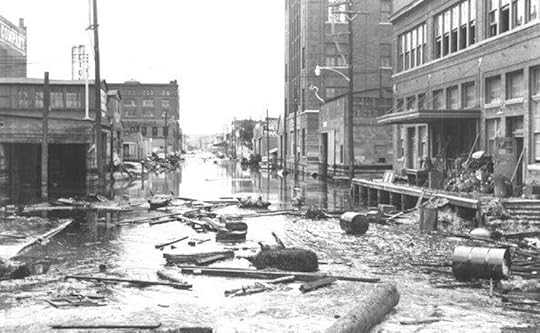
(is that a dead cow? why do I feel sad for this drowned cow, when his fate was doubtless grim in any case?)
Both times I’ve been to Kansas City I transited through the grand Union Station:
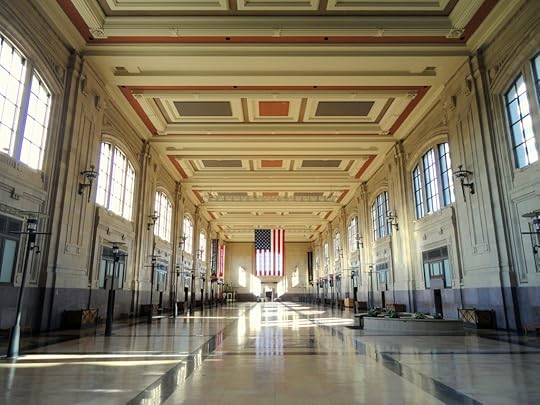

I ate all the barbecue, went to the Negro Leagues Baseball Museum and the American Jazz Museum, walked the Power & Light District when I went there alone. When I went there with my wife, again a brief stop before a train trip, we looked at the Christmas lights on Country Club Plaza, and we had a KC strip steaks in the West Bottoms.
The Kansas City of reality didn’t quite match the myth. That might be my fault, who knows. If I ever get back, I’d like to visit the Nelson- Atkins Museum, and see Bosch’s Temptation of St. Anthony:
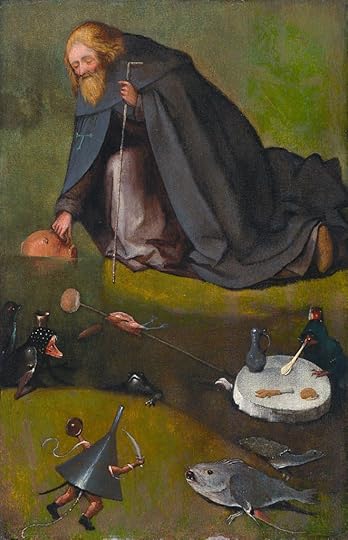
The other day on my plane back from New Jersey I looked out the window and saw Kansas City below me. There was Arrowhead Stadium and Kauffman Stadium, and the surrounding car-consumed wasteland:

it’s too bad there wasn’t a game on. I could’ve seen a tiny Travis Kelce and a tiny Patrick Mahomes.
November 15, 2025
Relaxin’ at Camarillo
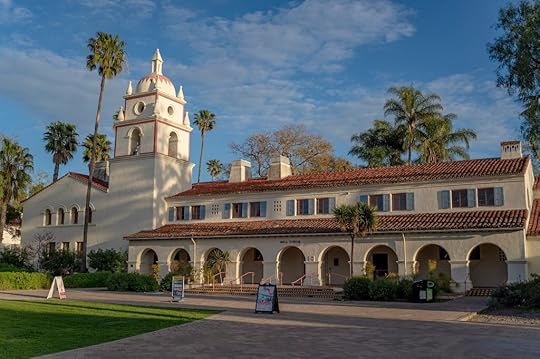
(source)
“Relaxin’ at Camarillo” is a composition by jazz saxophonist Charlie Parker. It is inspired by his six-month stay in Camarillo State Hospital in Ventura County, California, after serving a prison term for arson and resisting arrest. The tune is a blues in C major and has become a jazz standard.
reading about Kansas City lead me to Charlie Parker and inadvertently back to my own backyard, Camarillo, CA, and to a history of mental health treatment in California and the nation. From the Wiki page for Camarillo State Hospital:
The end of the institution came due to economic challenges and a changing outlook on mental health treatment. In 1967, Governor Ronald Reagan signed the bi-partisan Lanterman-Petris-Short Act, which greatly affected state hospital populations, forcing many to close immediately.
Another contributing factor was in 1996, when Governor Pete Wilson empowered a special task force to research reasons for and against the closure of the Camarillo State Hospital and Developmental Center.[2] The task force cited that the facility, which housed as many as 7,266 patients in 1954, had only 871 clients in 1996. The hospitals per capita costs had risen to nearly $114,000, second highest in the state mental health system. These factors prompted the initial closing of one-quarter of the facility’s 64 units and later, on June 30, 1996, the hospital officially and permanently closed.
The intentions and consequences of the Lanterman-Petris-Short Act seem quite complicated. Genuine concern for the well-being of the mentally disturbed may have led to policies that in the end left more people uncared for.
Reporter Dan Morain, writing at the Center for Health Journalism:
As a Capitol reporter for the Los Angeles Times and later a columnist and editorial writer for the Sacramento Bee, I covered some of those legislative battles. But I did not know fundamental details about the law — how the final bill was gutted and amended on the final day of the legislative session in 1967, and how it was a compromise that guaranteed that Reagan’s administration and local governments would have no legal or financial obligation to provide care for people once housed in state hospitals, or those who in an earlier day would have been in asylums.
Internal Reagan administration documents show that soon after the law took effect, the number of prison inmates with psychiatric issues increased, and private nursing homes began caring for larger numbers of people with severe mental illness.
In the years after its passage, Lanterman and his coauthors, Democratic Sens. Nicholas Petris of Oakland and Alan Short of Stockton, became alarmed at increasing numbers of homeless people struggling with mental illness — an issue that has become a dominant issue in California politics today.
Bold mine. Sometimes you hear cocktail party history that “Reagan closed all the asylums” but the truth as usual seems more complex. What about the Community Mental Health Act of 1963? or the history of Thorazine? This seems like it’s just a messy, messy problem. There’s a history of the feds and the states sending it down to “the community” without any funding, or with funding that later gets taken away, and the community doesn’t handle it. This feels like a good summary.
JFK signing the CMHA:
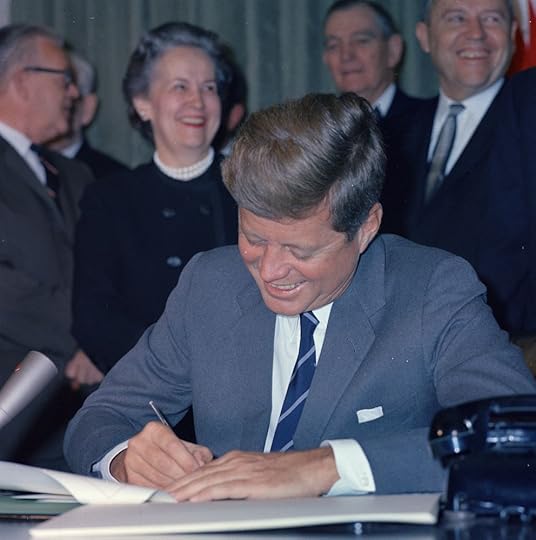
November 8, 2025
Herb Caen’s San Francisco
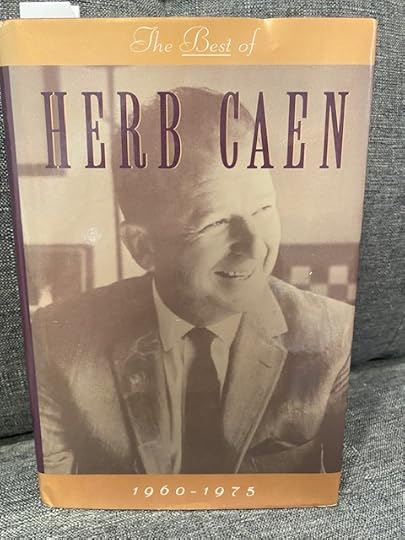
The ’40-41 San Francisco was a Sam Spade city. The Hall of justice was dirty and reeked of evil. The criminal lawyers were young and hungry and used every shyster trick in the law books they never read. The City Hall, the D.A. and the cops ran the town as though they owned it and they did. Hookers worked upstairs, not on the street; there were hundreds, maybe thousands, most of them named Sally. The two biggest abortion mills-one on Mar-ket, the other in the Fillmore —were so well-known they might as well have had neon signs. You could play roulette in the Marina, roll craps on O’Farrell, play poker on Mason, get rolled at 4 a.m. in a bar on Eddy, and wake up at noon in a Turk St. hotel with a girl whose name you never knew or cared to know. Sam Spade went through all this and his face showed it. You’d see him alone at 1 p.m. at a Taylor St. lunch counter, drinking coffee, chain smoking
You hear often – usually from rich tech people – about San Francisco being a warren of drug addled zombies. There’s truth to this, I’ve observed it myself. Feral zombies wander the Tenderloin.
But wasn’t San Francisco ever thus? Doesn’t Mark Twain report on the bums on the street? And hasn’t the charm always outweighed the derelicts?
If I do go to heaven, I’m going to do what every San Franciscan does who goes to heaven. He looks around and says, ‘It ain’t bad, but it ain’t San Francisco.’
I got this collection after a visit where I walked Herb Caen Way, with the ambition of getting some historical perspective on the city.
Forgive me if I’m about to go over familiar ground, but I get a little sick of hearing people say, as a society woman said the other night: “Who cares about those old drunks? Kick’em out and start building.” I think she would have voted for gas chambers.
(1972)
The tourists. They used to beat a path from the Ferry Building to the Cliff House. Now they roam around the Vaillancourt Foun-tain, making funnies, and stay in Hyatts and Holiday Inns, eat at whatever place is handy and ask plaintively: “Where do the real San Franciscans go?” There is no satisfactory answer, for the San Franciscan is forever a tourist in his own hometown, mingling with the tourists from elsewhere and usually having just as good, or rotten, a time as they… Come let us play and pay together.
Topic A:
Some of us old newspaper hacks were sitting around at the Nam Yuen in Chinatown the other night, eating stuffed chicken legs and discussing Topic A, as usual, which is not what you think. Sex may be Topic A in most places, and food is certainly Topic A in Paris, but in San Francisco Topic A is —San Francisco.
After we’d covered the usual high spots (Things Ain’t What They Used to Be, but were they ever?), a former Front Page Farrell who has been put out to pasture as an editorial writer sighed a wine-laden sigh. “When I was covering a beat,” he said, “I knew the town pretty well-and most of the characters. Now I feel like a stranger in my own city. Out of touch. The old characters are fading out, and I have no idea who’s taking their place.
January 20, 1963
Meeting John and Yoko:
Earlier that evening, the Lennons, and their local close friend, Craig Pyes, the co-editor of SunDance magazine, had dined sumptuously at Mme. Cecilia Chiang’s Mandarin in Ghirardelli Square, looking out over the quiet Bay and the old ships at rest.
“We’re crazy about this city,” said John, peering at the view through his bottle-thick glasses. “First time we came here, we walked the streets all day— all over town-and nobody hassled us.
People smiled, friendly-like, and we knew we could live here. We’d like to keep our place in Greenwich Village and have an apartment here, God and the Immigration Service willing … Los Angeles? That’s just a big parking lot where you buy a hamburger Ifor the trip to San Francisco.”
They raved over Mme. Chiang’s newest delicacy, scallop soup.
“The food in this city is fantastic,” John went on. “Better than Lon-don. You know, more variety. And the beautiful old houses and the strange light. We’ve never been in a city with light like this. We sit in our hotel room for hours, watching the fog come in, the light change.”
Peking duck, mandarin style, came wrapped in paper thin pan-cakes. “We drove here from New York,” John continued. “Yoko and I probably have seen more of the United States than most Americans. United Statesians? When I was a Beatle, I didn’t see anything —whoosh-whoosh-whoosh. In Nevada, we got out of the car and rolled in the sand. We’d never seen a desert before.”
In answer to a question: “Yes, we want to live here perma-nently. There’s violence, sure, and it’s scary, sometimes, but there are so many good people, so many chances for change. Not like England, which is dead. Sure, we’d be happy to become American citizens. We’re not here on a tax dodge, you know.”
The Immigration Service will make a decision in November on whether the Lennons can stay here. “We’re in limbo till then,” lamented Yoko. “It’s hard to settle down, to write, to work, when you don’t know where home will be.” A kind, gentle, soft-spoken couple. I think we’d be lucky to get them.
July 21, 1972
On the anniversary of the World’s Fair:
Tonight, if you’re in the mood, you may listen to Woody Herman, visit Top o’ the Mark and drink a toast to Treasure Island, thereby celebrating three silver anniversaries in one. Like most anniversaries, it will be a little sad.
February 23, 1964
November 5, 2025
Cheney
The other intern was active in Young Democrats and naturally wanted to intern with his party, which then controlled the legislature’s lower chamber. The Republicans, who controlled the state senate, agreed to take Cheney, the last man standing, as their intern. Cheney, by his own admission, “didn’t have a political identity.” His parents had been Democrats and if the other intern had been a strong Republican, Cheney would gladly have worked for the Democrats. In essence, Cheney became a Republican by accident.
All these from Stephen F. Hayes’ biography, Cheney: The Untold Story of America’s Most Powerful and Controversial Vice President.
The power of a memo:
When Cheney learned that Rumsfeld had been appointed to run the OEO, he drafted an unsolicited twelve-page strategy memo on the upcoming confirmation hearings. He gave the memo to Steiger, who then passed it to Rumsfeld. Cheney’s memo focused on accountability, and—not coincidentally—so did Rumsfeld’s testimony:
What was the mission exactly at the Office of Economic Opportunity under Richard Nixon?
Rumsfeld sought to have many OEO programs reassigned to other departments, a move that many observers interpreted as the first step in a plan to dismantle the agency. “The president sent Rumsfeld there to close it down,” recalls Christine Todd Whitman, future governor of New Jersey and administrator of the Environmental Protection Agency, who began her political career at the OEO as a special assistant. “Some of us thought the programs were worth saving, but we were all aware that the agency’s time was limited.”
Nixon:
Nikita Khrushchev, Nixon said, had once given him a sage bit of advice: in order to be a statesman, it is sometimes necessary to be a politician. “If the people believe there’s an imaginary river out there, you don’t tell them there’s no river there,” Cheney remembers Nixon saying. “You build an imaginary bridge over the imaginary river.” In late June 1972, the CLC froze food prices again.
A philosophy forms:
His experience in the Nixon administration began to change that. He saw well-intentioned government programs that solved one problem and created a dozen others. A plan by the Office of Economic Opportunity to train migrant workers to grow azaleas in South Carolina would have provided jobs for the workers but destroyed the market for azaleas in the process. Need-based assistance in the poorest parts of the country was diverted to “community-action programs” that did little more than line the pockets of local politicians. Through the Cost of Living Council, the IRS targeted small businesses because their owners wanted to give employees a raise. Grocery stores had to fight with the federal government to raise the price of a dozen eggs. To protect the American public, the Price Commission directed McDonald’s to reduce the price of Quarter-Pounders. To Cheney, these experiences not only demonstrated the inherent inefficiencies of big government but seemed to confirm the wisdom of individualism and self-reliance, the cardinal virtues of his home state.
(why not extrapolate that to how things would go when Big Government invades other countries?)
(it is really wild that the Nixon administration had federal government price controls on everyday goods and McDonald’s burgers! Every time I’m reminded of the Nixon era price controls I feel crazy)
Cheney was thirty-three years old when he began his work for the Ford administration. He had sat in on meetings with Ford when they were both working in the House. But Cheney didn’t meet his new boss until after starting full-time at the White House. Ford was a trusting soul, a rarity in the cutthroat politics of Washington, and he immediately saw Cheney as part of his inner circle. “He is as comfortable with Cheney as he is with Rumsfeld,” one senior aide of Ford’s said. “He doesn’t hesitate to say ‘Get me Cheney,’ if something comes up and Dick is the one close at hand.”
…
Little more than a decade earlier, Cheney had been a college dropout living in a tent and working as a grunt laying power lines in rural Wyoming. Now, he was working directly for the leader of the free world, coordinating the unceremonious dismissal of the man in charge of energy policy for the United States. It’s hard to imagine a more dramatic change in direction, but Cheney doesn’t remember spending much time reflecting on where he had been and where he was headed
How he stifled Nelson Rockefeller:
Frustrating the policy proposals of the vice president became a significant part of Cheney’s job in the Ford White House. Rockefeller, said Cheney: …would periodically produce these big proposals and he’d go in for his weekly meeting for the president and oftentimes give him these proposals. At the end of the day I’d go down for the wrap-up session and the president would say: “Here, what are we going to do with this?” And I’d say, “Well, we’ll staff it out.” So I would take it and put it into the system. It would go through OMB and it would go to the Treasury and all of the other places that had a say in his Council of Economic Advisers. Of course the answer would always come back, “This is inconsistent with our basic policy of no new starts,” so it would get shot down. He would later describe this role as putting “sand in the gears.” The phrase “we’ll staff it out” quickly became a euphemism for killing one of Rockefeller’s projects.
Back to Wyoming to run for office:
Although they complained about their father’s driving music—an eight-track tape of the Carpenters—the girls liked to go along.
Health tips:
As he began to mend, Cheney consulted with his doctor, Rick Davis. “He said, ‘Look, hard work never killed anybody.’ He said, ‘What is bad for you, what causes stress is doing something you don’t enjoy, having to spend your life living in a way you don’t want to live it.’”
…
He began a light exercise regimen, walking the five blocks from his house to the campaign headquarters and back.
Secretary of Defense:
As he stood behind the oversize desk that once belonged to General John Pershing, the legendary commander in World War I, he ordered an aide to fetch the Pentagon organization chart. The aide returned and flopped the mammoth diagram in front of his boss. “It sort of fell off both ends of the desk,” says Cheney. “And I rolled it up and stuck it in the trash and never looked at it again. I decided right then and there that I wasn’t going to spend a lot of time trying to reorganize the place.”
Odd incident on 9/11:
As the afternoon wore on, Condoleezza Rice noticed that Cheney hadn’t eaten anything. “You haven’t had any lunch,” she said to the vice president. As soon as she said it, she realized that it probably sounded odd. “I thought, ‘Where did that come from? What a strange thing to say in the middle of this crisis.’”
(Whether or not the US military shot down any civilian aircraft on that day (a mild conspiracy theory, that they shot down Flight 93), there was period on the day when Cheney certainly thought that they had, and on his orders. It seems to me that this traumatized him, or at least deeply affected his thinking.)
“I’ve seen him listen to some tirades from senators that would try anyone’s patience,” says McCain. “He stands there, smiles. Polite.” McCain sits up; straightens his face; and, speaking in an exaggerated monotone, does his best impersonation of Dick Cheney: “Thanks very much. Thank you. Yes.”
“I’ve seen a guy come up to him and say, ‘We’ve got to reauthorize the ag bill. Understand? My farmers, they’ve got to have this emergency funding. You’ve got to get the president to say, ‘We need this ag bill.’ He smiles,” says McCain, continuing as Cheney. “‘ Thank you very much. Yes. Yes, Pat.’ In fact, now that I think about it, I’ve never seen him fire back at any one of these guys when they do that. I just never have.” Cheney, of course, has a reason for subjecting himself to this gantlet. “What I try to do is maintain those relationships when you don’t need them so that they’re there when you do need them,” he says.
lifestyle:
Cheney sips Johnny Walker Red and snacks from a jar of Planters dry-roasted peanuts. (“ Yeah, and he doesn’t share,” laughs one friend.)
On fish:
Words stream out of Cheney’s mouth as he describes his favorite fish. “A steelhead is a magnificent fish. It’s a sea-run rainbow that spawns in fresh water. It hatches out, spends maybe a couple of years in fresh water. And then goes to sea, just like Atlantic salmon. A couple years in the ocean, cruising the Pacific, grows to considerable size and then comes back to fresh water. Probably the biggest steelhead I’ve caught—a few in the twenty-pound class,” he says, then clarifies, “twenty-pounds-plus. That’s a big fish on a fly rod. They catch a few up there every year where we go, over thirty pounds. I’ve never caught a thirty-pounder. And it’s very tough technical fishing. You might fish all day long and not have a strike, but, boy, once you’ve got one on it’s just—it’s an amazing experience when you’ve got a twelve-, fifteen-pound steelhead on the end of your line, tail-walking down the river, putting up a hell of a fight. And you do it in some of the most beautiful country. If I had one fishing trip left in me I want to go spend a week on the Babine.”

(source)
Previous coverage of Cheney:
November 4, 2025
Senate Majority Leader Thune
The Speaker of the House, Mike Johnson, is a chronic liar and uninspiring character, at least to this home viewer. From The New York Times:
Mr. Johnson, who without the president’s backing wields little influence over his own members, has chosen to make himself subservient to Mr. Trump, a break with many speakers of the past who sought in their own ways to act more as a governing partner with the president than as his underling.
“I’m the speaker and the president,” Mr. Trump has joked, according to two people who heard the remark and relayed it on the condition of anonymity because of concern about sharing private conversations with him.
(who knows though, maybe that is a “seven almonds” story)
But what about the Senate Majority Leader, John Thune? Everyone seems to like this guy. From a Politico profile by Michael Kruse:
There is, however, a not inconsiderable camp of Democrats and anti-Trump Republicans who expected more. “To the extent that there needs to be Republicans in the Senate, and obviously there’s going to be, I wish they were all like John Thune,” Drey Samuelson, the longtime chief of staff of the late Tim Johnson, the last Senate Democrat from South Dakota, told me. “I mean, I don’t know anybody that really doesn’t like John Thune,” Samuelson said. “I like him.”
from a New Yorker profile by David D. Kirkpatrick:
a city aptly described as Hollywood graduated from for ugly people, Thune could pass for an actual movie star, with pale-blue eyes, a square jaw, and Mt. Rushmore cheekbones. Now sixty-four, he has salt-and-pepper hair that is still thick enough to part neatly on the side, and the broad lats, shoulders, thick arms, and narrow waist of a basketball player. His morning workouts at the Senate gym are legendary. Until a recent knee injury, Thune held the informal title of the fastest man in Congress. (He has likened that honor “the best surfer in Kansas.“)
(why did he say Kansas instead of his home state, South Dakota?)
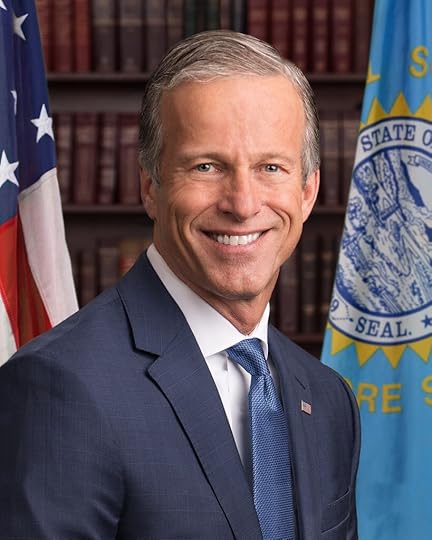
Thune used to be opposed to Trump:
Thune’s candor often stood out in the course of Trump’s rise to power. During the 2016 race, Thune condemned Trump’s expressions of bigotry as “inappropriate.” After the leak of the “Access Hollywood” video, on which Trump boasted about grabbing women by the genitals, Thune was one of the first Republican senators to demand that Trump quit the race “immediately,” though the election was only a month away. And, even after Trump’s victory, Thune never masked his opposition to the President’s most cherished plans. In a 2017 television interview, he objected to the mass deportation of illegal immigrants, adding that “a lot of my colleagues” shared his view. He has called across-the-board tariffs “a recipe for increased inflation” that would punish South Dakota farmers and ranchers by setting off trade wars. He has consistently stood with what he calls “our trusted intel community” on the conclusion that Russia indeed meddled to help Trump in the 2016 election; he has called Vladimir Putin “a murderous thug” whose invasion of Ukraine proved “the value of NATO.” Thune also often praises wind energy—a booming industry in his home state—even though Trump considers turbines loathsome eyesores.
Trump’s demand that Congress refuse to certify Joe Biden’s 2020 election win elicited one of Thune’s few memorable turns of phrase: he told journalists that the request would “go down like a shot dog” in the Senate. After January 6th, Thune called Trump’s role in the riot “inexcusable.” Linda Duba, a friend from South Dakota and a retired Democratic state legislator whose children used to run in track meets alongside Thune’s, told me that she once asked him what working with Trump was like. “Not fun,” Thune had said. Another old friend was blunt: “I think he thinks Trump’s an ass.”
Not so much anymore. Here’s a (long) recent history of Congress I guess you can skip:
Thune arrived in Congress at a time that now looks like a high point of its power and effectiveness. In the nineties, lawmakers debated issues, committees drafted bills, and the parties compromised to tackle urgent problems.
Congress sent Presidents George H. W. Bush and Bill Clinton major legislation on trade, crime, environmental protection, financial regulation, civil rights, and other issues. Negotiations between the parties even closed the deficit, briefly.
Philip Wallach, a fellow at the conservative American Enterprise Institute and the author of a timely book, “Why Congress,” told me that, looking back, “it’s really amazing-nothing like that has happened in the last fifteen years.”
One turning point, Wallach told me, was Newt Gingrich’s Republican takeover of the House of Representatives, in 1994. Gingrich relished partisan warfare, demanded loyalty from his rank and file, and turned district elections into contests between the national parties. Political scientists have identified long-standing trends that have contributed to the deepening polarization of Con-gress, including the growing ideological homogeneity of each party and the breakdown of the media into echo chambers.
But Wallach is surely correct that Congress, the branch of government designed to mediate factional conflicts, has succumbed to them—and even made them worse.
To more effectively wage partisan battles, Democratic and Republican leaders in both chambers consolidated their own power. Instead of relying on committees to draft bills, party leaders increasingly negotiated significant measures behind closed doors, then brought often in the form of giant “must-pass” bills against a tight deadline, such as measures to keep funding the govern-ment. In the Senate, the concentration of power has been especially stark. Senators used to take pride in proposing amendments during floor debates, facilitating bipartisan dealmaking even against party leaders’ wishes. Yet those leaders now often block individual senators from such freelancing by allowing consideration of only a limited number of amendments and then filling those slots with innocuous proposals of their own choosing—a tactic called “filling the tree.” The former Democratic Majority Leader Harry Reid pioneered this strategy in the two-thousands, and his successors from both parties have kept it up ever since.
In the Congress of 1991-92, Wallach noted, the Senate adopted more than sixteen hundred amendments. In 2023-24, that number fell to two hundred. And the last Congress passed just two hundred and seventy-four bills- down from about seven hundred a year during the late eighties and fewer than any Congress since before the Civil War. Of those two hundred and seventy-four bills, the ten longest were assembled by the party leaders, and they accounted for four-fifths of all the pages of legislation passed in that Congress.
Lawmakers sometimes grouse about their loss of power. Ten years ago, Mark Begich, then a Democratic senator from Alaska, tried, unsuccessfully, to instigate a revolt against Reid’s tree-filling. Lamar Alexander, another critic of the practice, told me that being elected to the chamber now resembled “joining the Grand Ole Opry and not being allowed to sing”
Several senators told me that, at the end of last year, Thune negotiated an agreement with Democratic leaders that allowed Biden to equal the number of judicial confirmations made during the first Trump Administration. In exchange, the Democrats agreed to drop a handful of liberal appellate nominees whom Republicans found especially objection-able, leaving those seats open. Senator Kirsten Gillibrand, a New York Democrat who participates in a weekly Bible study with Thune, told me that “he was fundamental to all the bipartisan work we did in the last cycle.” For example, Thune helped initiate talks on an immigration bill, even letting legislators use his office. In the end, the bill became a classic example of partisan paralysis: when Trump indicated that he preferred to leave the border problems unaddressed, so that he could keep campaigning on the issue, the Republicans killed the legislation.
The Thune ancedote that stuck with me is this one, from Kruse in Politico:
But Thune decided against a White House run. His mother neared the end, a decade of dementia having taken its toll. “She would sit down at a meal, and she would say, ‘We suffer greatly here on Planet Earth,’” Tim Thune told me. “She might say that 30 times over the next 15 minutes.”
November 3, 2025
The Psychology of Strange Killers
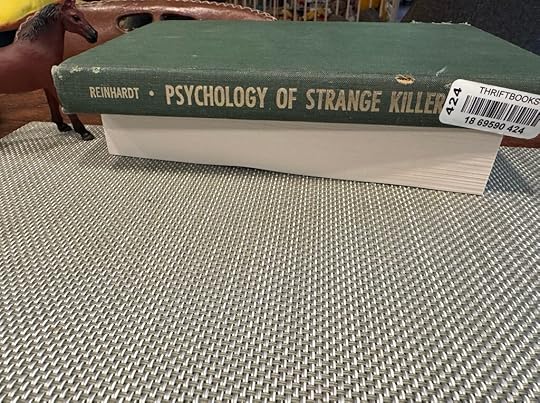
Reader, you can breathe: I found the origin for the Charles Starkweather quote we first found in Larry McMurtry’s Roads. It appears in James Melvin Reinhardt’s book Psychology of Strange Killers. Reinhardt was a sociologist at University of Nebraska, and interviewed Starkweather at length. This particular quote seems to come from a letter Starkweather wrote Reinhardt.
In the death cell he wrote:
“I began to wonder what kind of life I did live in this world, and even to this day, I’m wondering about it, but it don’t matter how much I used to think about it I don’t believe I ever would have found a personal world or live in a worth-while world. They say, this is a wonderful world to live in, but I don’t believe I ever did really live in a wonderful world. There hadn’t been a chance for me to have the opportunity, or privilege, for the best things in life.” What were the “best things in life.” Here they are:
“I haven’t ever eaten in a high class restaurant, never seen the New York Yankees play, or been to Los Angeles or New York City, or other places that books and magazines say are wonderful places to be at.
“Yes, I went out with girls, some were mild dates with nice Christian girls, but most of the girls I went out with, were either the flibberty-biggerty (sic) type, that used too much make-up, and dressed in expensive clothes, or they were the harlot type, that weren’t hard to get a date with, and easy to get along with.
“I had my fights that seem to happen every other day, and like almost everybody, I had my dreams of things I wanted. But of all the dreams, fights, and women to me none of them ever seem to fit in this world. I guess that’s what I meant when I said,
“I didn’t know life, or what it was good for, and the reason I didn’t know, I just didn’t take time to fine out.”
••. Charles invariably showed an affectionate concern for his mother, his sister and younger brothers. Reference to his father,
I have to agree with the magazines Starkweather cites that New York and Los Angeles are pretty good.
Reinhardt’s own life is a reminder that life for pretty much everybody was a lot harder a hundred years ago:
Orphaned at age three, Reinhardt lived with his grandfather. Instead of attending school, he spent most of his young life working, mainly in cotton mills. During World War I, Reinhardt served as a private in the infantry. After the war he went back to school and received his high school diploma at age 22. He then enrolled as an undergraduate at Berea College in Kentucky and graduated in 1923. Reinhardt received his Master of Arts in 1925 and Doctorate of Philosophy in 1929, both from the University of North Dakota.
Never trust these retvrn types – hypermodernity has its problems but for comfiness it’s quite nice.
Reinhardt isn’t sure what to make of Starkweather, even he seems a little baffled. Somehow Charlie comes off as vaguely likeable:
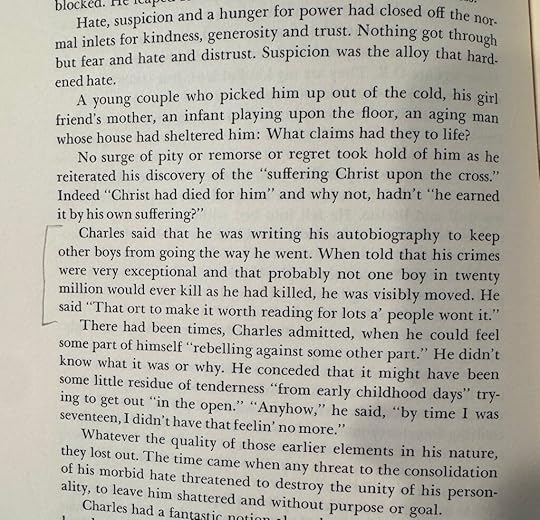
even though among his victims was a two year old girl:
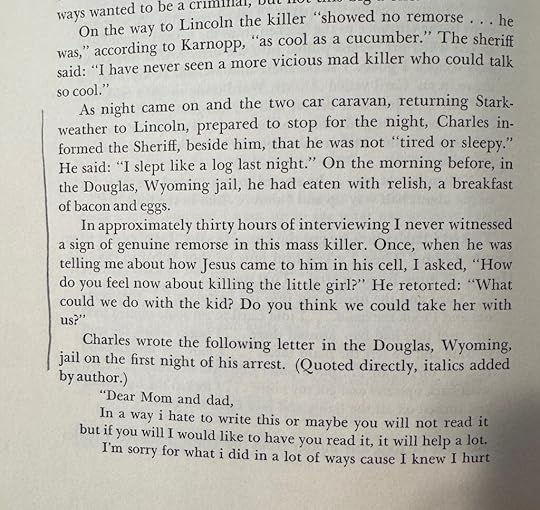
You can see why artists as diverse as Billy Joel, Bruce Springsteen, and Terrence Malick were interested in this story. The movie Badlands seems as meaningful an attempt at understanding as Reinhardt’s book.
Those interested in following this further may wish to acquire Reinhardt’s full length treatment, The Murderous Trail of Charlie Starkweather. Personally I’ve had enough for now.
When they put him in the electric chair Charlie Starkweather tested the straps and asked if they could be a little tighter.
November 2, 2025
Great comment
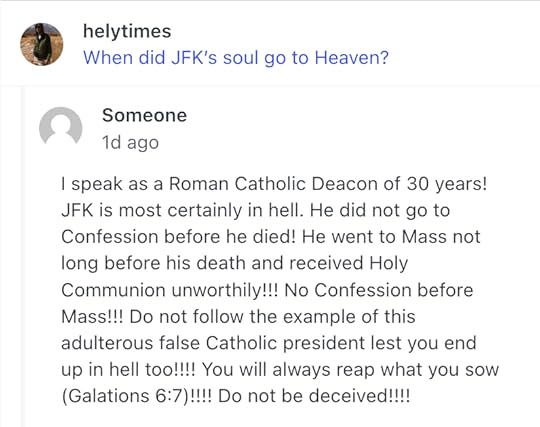
on our February 2016 post When did JFK’s soul go to Heaven?
Sinner though he was I gotta believe in a God who could redeem and receive JFK.

